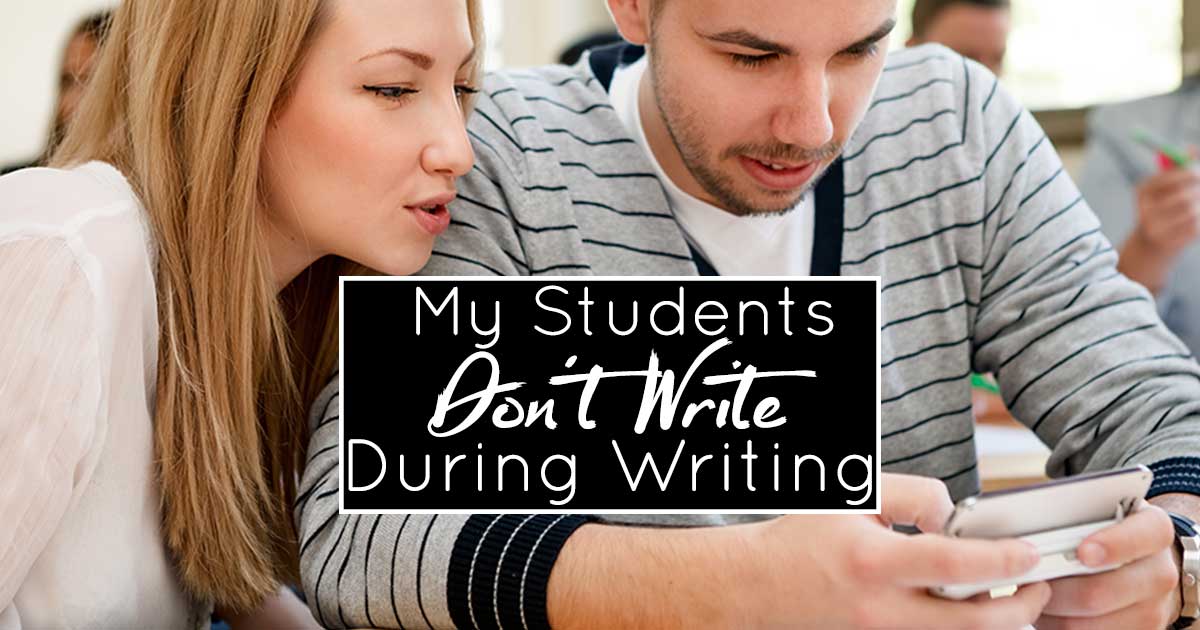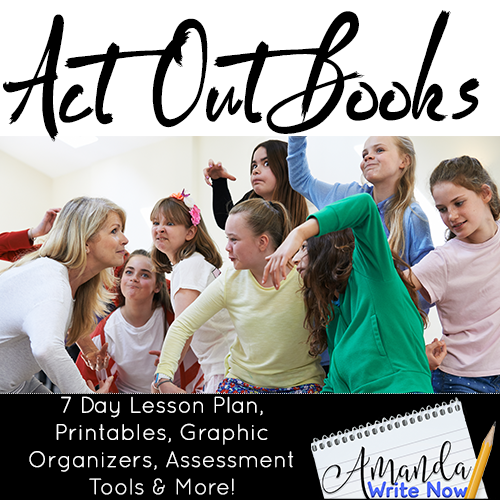
Don’t have time to read all of this?!?! Listen below:)
So, some of your students aren’t writing during writing? Maybe they are just sitting there staring off into space. Or maybe they are sneaking onto their phone, they’ll probably tell you they were looking up a word on thesaurus.com. Or maybe they are whispering with a friend, about…who knows what? It is aggravating, isn’t it!?! You work so hard and these rascals could care less!
The thing we need to remember is that goofing off is going to happen…it just will. Even with the most engaging, best laid plans, our students are kids. We, as teachers, need to always remember this fact.
But, what can we do to minimize the goofing off and increase on task behavior during independent work time? How can we make sure that our classrooms are productive places where readers and writers thrive? Read on to learn how to create an environment that allows for real reading and writing to take place. No more of that fake stuff!
Make everything crystal clear.
Expectations/rules, consequences and noise levels should be explicitly taught, modeled and practiced…repetitively. Click here for a few behavior mini lesson resources.
Below are some ideas about the kinds of expectations you could teach in order for students to be successful in both your reading and writing workshop class. In order for these expectations to become a reality you must take the time to act each expectation out and discuss them thoroughly with students! Have students take turns being the teacher while you act like being a student. You could also have students discuss possible misbehavior and act out the ideas they come up with along with your chosen consequence sequence (see below for a possible consequence sequence).
Reading Workshop Expectations
- I’ll always have a good book prepared to read each day. Kindles & Nooks are acceptable, computers and cell phones are not.
- Independent reading time is not “pick a book time”.
- I can browse our class library during breaks, before class and after class or during study hall.
- I won’t switch books/abandon a book more than once during a period.
- Talking during silent reading time is not permitted unless the teacher is allowing buddy reading.
- There will be designated times to discuss books with partners, in groups, with the teacher and class.
- I will do my best to have meaningful discussions about the books I’m reading.
- I will keep track of titles I finish in my notebook.
- I will make sure my cell phone is either muted or off before class.
Writing Workshop Expectations
- I’ll always have my writer’s notebook prepared to write in each day.
- I’ll work to build my writing stamina during independent writing time by keeping my pen/pencil to the paper and writing for as long as the timer runs.
- I will track how long I’m able to write without getting antsy in my notebook.
- Talking during silent writing time is not permitted unless the teacher is allowing writing partner work.
- There will be designated times to discuss writing with partners, in groups, with the teacher and with the whole class.
- I will make sure my cell phone is either muted or off before class.
Consequences
Explain to students that they will always receive a warning before a consequence is given. The consequence sequence should also be acted out with roles for students and the teacher. Here is a possible sequence of consequences:
- Verbal warning
- Move to a designated location within the classroom
- After/before class meeting with student scheduled
- Email/call home
- Meeting with parents scheduled
Teach about noise levels.
Before I send my students off to work after my mini lesson I always both state the noise level AND write it down so that I can point to it for students who may need a warning about following noise levels. Below is a list of noise levels and descriptions of what each looks like for your class.
No Noise
Secondary students interpret, “no noise” in different ways because they are in a variety of classes with different teachers. Some teachers hold fast to a strict, absolutely silent policy while other teachers might tolerate a little whispering, even after they said students should be silent. Whether students choose to be silent or not is completely dependent on you holding them accountable and explicitly teaching what “no noise” looks and most importantly, sounds like. This is why you need to actually act out and practice what no noise looks and sounds like.
Whisper
I like to use this noise level when students are working in partnerships or in groups. Again, show what this looks and sounds like so students know exactly what you expect when whisper is the noise level. Sometimes, when everyone in the class is whispering at the same time, the noise level progressively gets louder and louder. Make sure, before you freak out and start shouting over students to be quiet, that you listen in on what they are talking about. As you roam the room and listen quietly to the conversations and you notice students are all on task, there is no need to lower the noise level. But if there is a lot of off task talking, you may want to pinpoint the loudest students and have a private conversation with those students. Make sure to give them a warning before dolling out a consequence.
Author Voice
This noise level is for when individual students are giving presentations, either because they are giving a book talk or sharing some of their writing to the class. Students should speak loud enough for those in the back of the class to hear. As the teacher, I sit or stand farthest from the student presenter so that I can give them a signal if I think they need to speak louder. Model this signal and have students practice speaking loud in front of the class.
Have conversations.
Sometimes we assume the entire class is goofing off when things get out of hand. But often it is only a few students who are causing the class to be off task, and you know exactly who these students are. If it is a small clique or a few students here and there, have conversations with these students individually. Here’s how…
Make sure to give a warning first. “I notice you are talking about something unrelated to our class work. This is your warning. If you continue this behavior we will move to your consequence which is moving you to that location,” then point to the location.
But, what if after a warning, students continue to test you? Calmly follow through with what you said would happen. If the situation escalates, do nothing. Don’t argue or yell at the student. Keep your cool, always. Later you can inform the student that they need to meet you at a specific time, before or after class to have a conversation about what occurred in class. From here, you will follow the steps outlined in the “consequences for not meeting expectations”.
Allow for breaks.
Sometimes students goof off because…they need a break! Writing and reading can be tough work! If I notice my students have been pretty productive, I often reward them with little breaks here and there. They appreciate it and are more likely to behave and work if they know that you will kindly give them a break once and awhile.
Stay neutral.
I stated this earlier and I’m repeating it here because it is so important! You should maintain a neutral attitude at all times. You should not act angry, frustrated or impatient in front of your students, ever. It helps incredibly to take deep breaths (a meditation practice has also helped me tremendously). When you are ready, repeat what you see the student doing or what you hear them saying. You could also write down what you are observing, just to bide time while you get your patience in tact.
Wrap Up
If you want students to take your class seriously and be on task 100% of the time, I’m sorry to tell you it isn’t going to happen. But, there are things you can do to maximize on task time and get your students really invested in the work they are doing…
You must make your expectations crystal clear, have a clear consequence sequence that is transparent to students, talk to your students who aren’t writing one on one, give breaks and always stay neutral.
It is also important to make sure students are writing and reading for authentic purposes. Here are some resources for doing just that:



Great article for important reminders! Sometimes we get so big teaching writing that we neglect the organization and management aspects. Thanks for ideas!
That is so true Bobbi! We get so caught up in the curriculum (understandably) that we forget the management and relationships with students too, which are so key:) Thanks for your comment!